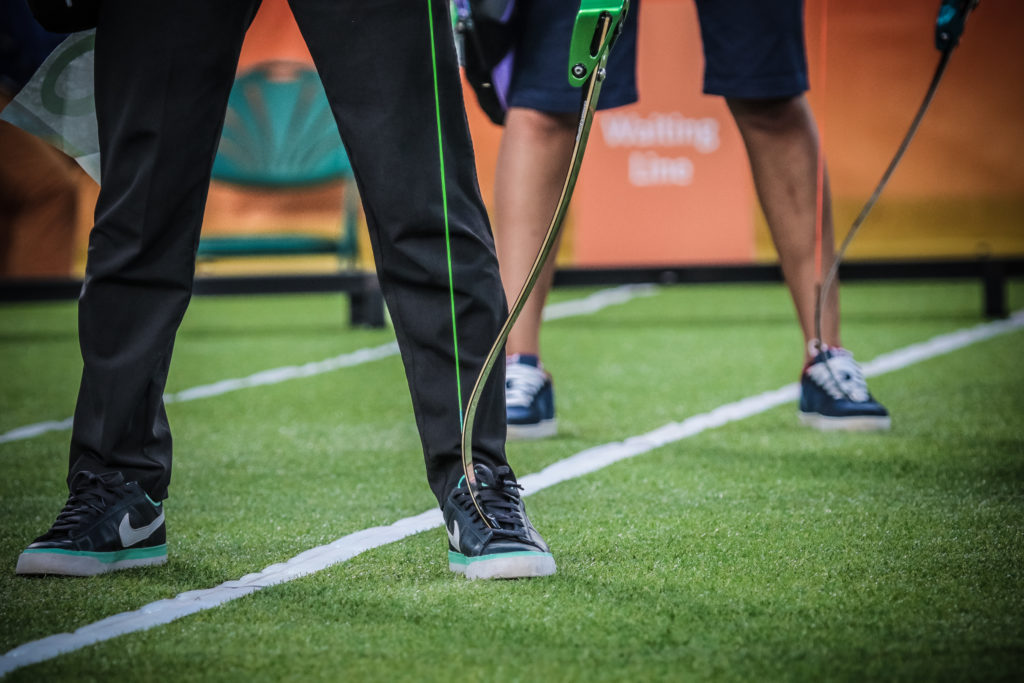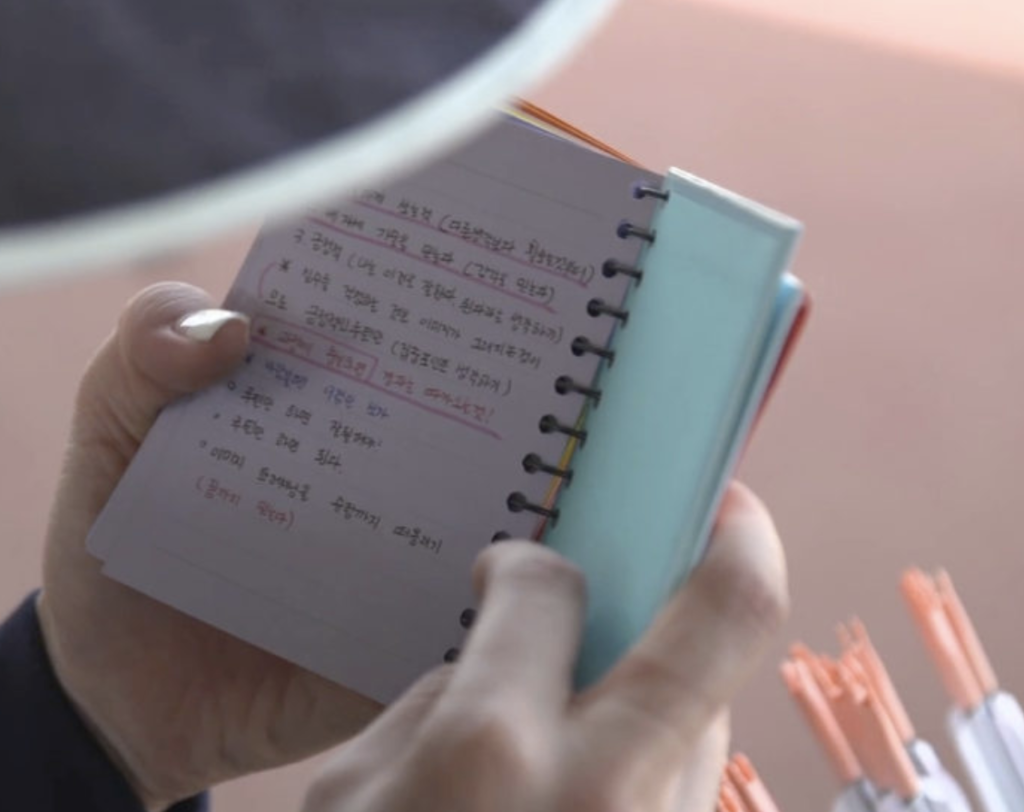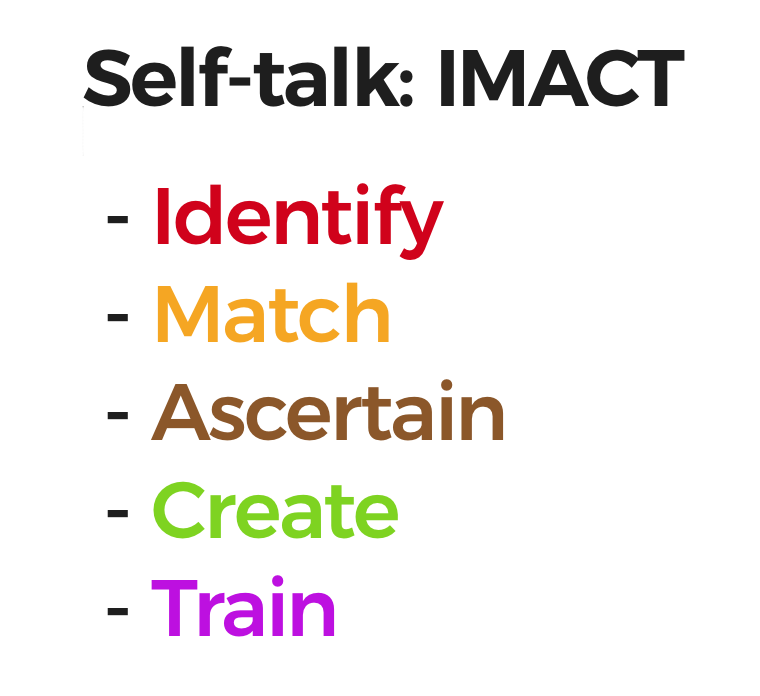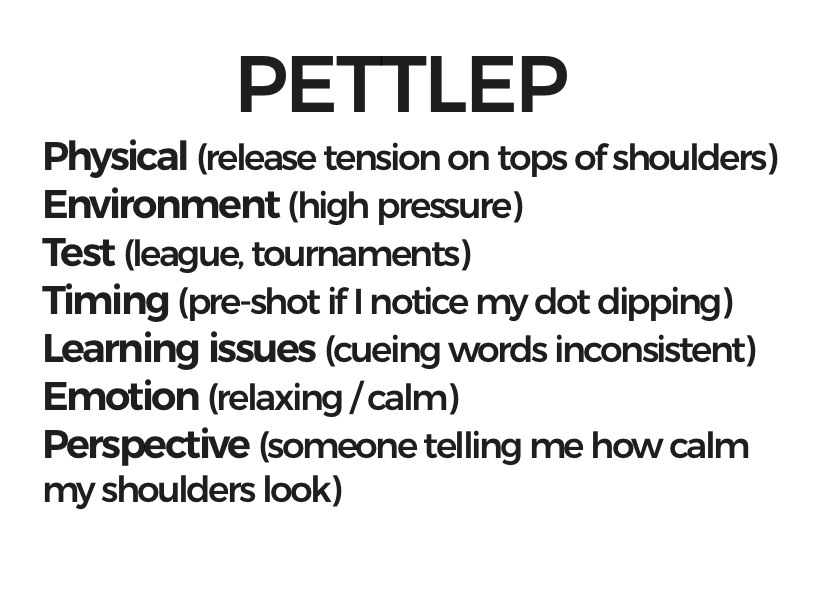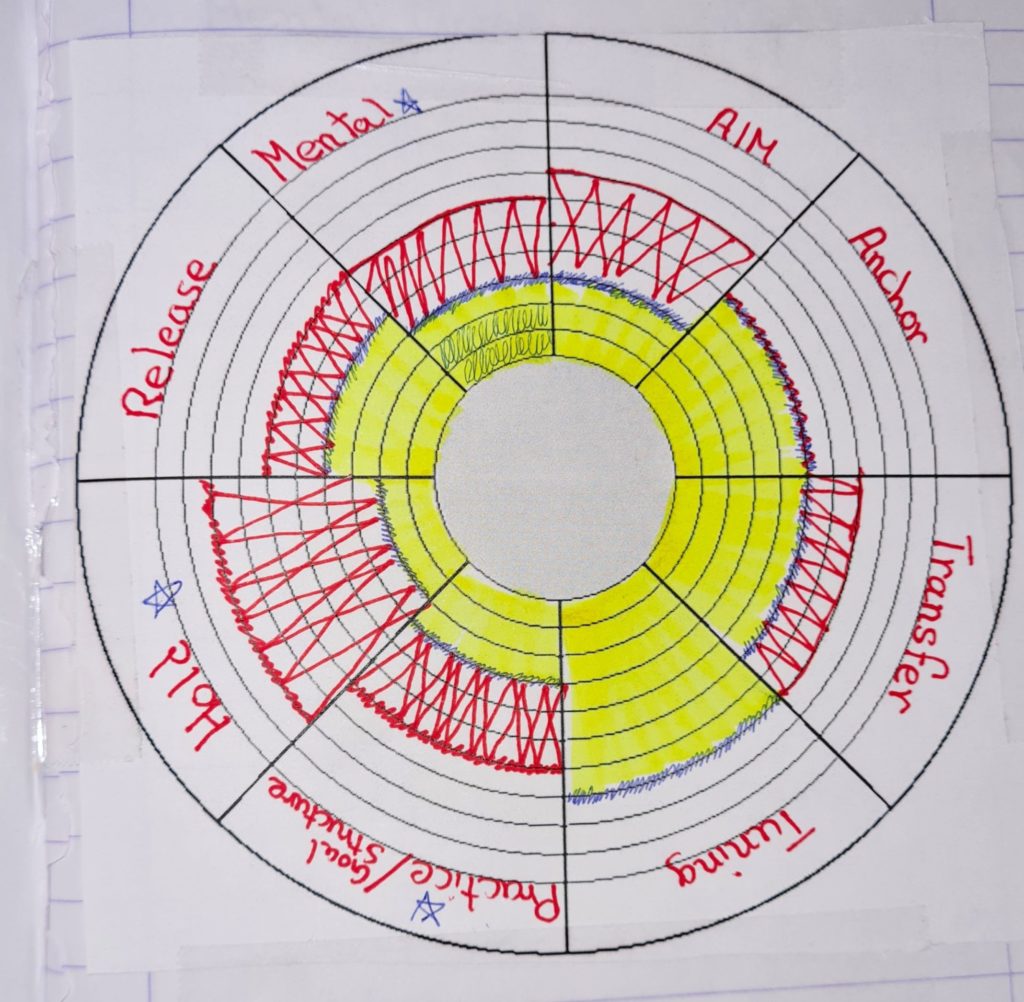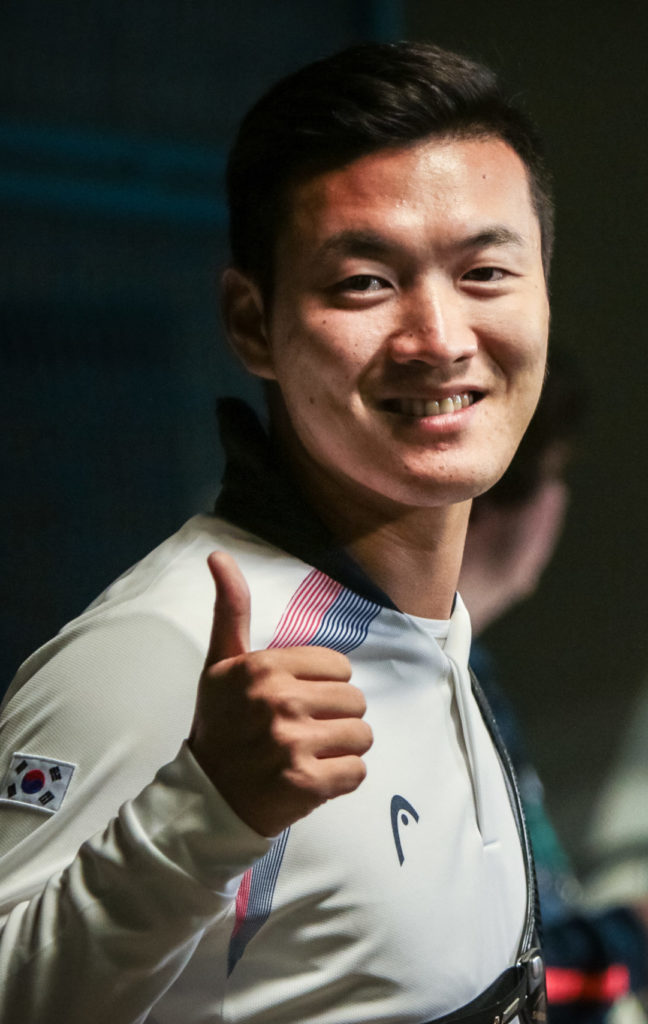What separates the good from the greatest – and how can you get there too. By Christopher Bruntsch
Let’s start with the basics; what are psychological skill techniques? A clinical definition is the constant practice of a specific psychological skill that can help enhance performance and achieve greater self-satisfaction within the sport. It is rare to find a simplified definition in the sports psychology world, and simple does not mean easy.
If you rewatch, on YouTube, the 2016 Olympic men’s gold medal match between Korea’s Ku Bonchan and France’s Jean-Charles Valladont, you will see Bonchan take aim for the final arrow that sealed his first Olympic gold medal. What most people don’t remember was the end before the decisive arrow. The future winner did not look as composed leading into the end, after Valladont had rallied back from two sets down.
The pressure began increasing for both archers and the coaches were busy trying to calm their athletes like skittish racehorses on the track, using words to help their archers keep their focus on the shot process and not on the most significant moment in their archery lives.
Finally, the horn sounds and Bonchan approaches the shooting line; taking his attention away from his coach, he closes his eyes and begins to mumble words under his breath, almost like a silent prayer. That is what it might look like to the untrained eye but, to those in the know, he is using one of the critical psychological skill techniques all the Korean team use: self-talk.
Self-talk
Self-talk is a technique that unfortunately falls victim to oversimplification. If you were to ask someone what it means to “do” self-talk, you might get a response of positive statements like “I can do it,” or one of my personal favourites: “it’s like me to shoot a ten.”
These are a form of self-talk; however, self-talk needs to be understood as a technique. Self-talk can improve performance; consequently, poor performance can impact self-talk; it is a two-way street. Self-talk is an effective strategy to help improve performance; it can improve concentration, build confidence and aid in physical performance.
How do we create a self-talk strategy for archers? One effective model that I’ve used for my clients is what’s called a Self-Talk-IMACT model. (Figure. 1) The first step is to identify what do you want to achieve, for example, “release of bicep tension.”
Next, you will need to match the type of self-talk needed to execute what you wanted to achieve. For some people, it’s repeating the process of relaxing the bicep muscle in your head, while others will need a more personal internal cue such as release or transfer. Practice different types of cues.
Effective coaches strive to find ways to communicate to their archer’s processes that need to be done. They use specific cues or key phrases to help them convey the information. There are two types of cues: internal and external. Internal cues focus within the body, muscle tension, skeletal movement.
External cues use imagery and physical interaction of the environment. A classic is imagining there’s a string at the tip of your draw elbow, and someone behind you is pulling it straight. Play around and see which works for you.
Step 3 is to ascertain which cues work best for you. All you need to do now is to create a specific plan, and finally train yourself and your self-talk plan to perfection. Simple, huh?
Imagery
Imagery is a tool that is used in all our everyday lives, from rehearsing an important presentation we might have to make at work or picturing executing a perfect shot. Its main functions include improved motor control, enhanced motivation, control arousal, problem-solving, self-efficacy, and recovery from injuries.
Imagery can be used in a multitude of ways. For archers, one common way is using video analysis. Video analysis can be broken into either recording your practice sessions and reviewing your shot routine or simply watching other archers; doing through imitation is an effective way to learn a new skill. Imagery is a tool that is a staple in any archer’s quiver. When attempting to create an imagery training program, the PETTLEP model is useful. (See Figure. 2)
Total Body Relaxation
Total Body Relaxation (TBR) allows athletes to regulate their anxiety and arousal levels and manage their physical energy. Relaxation practice is well suited for specific times when an athlete feels overwhelmed and believes that they are incapable of performing at their best due to overstimulation. Athletes use various methods to help themselves calm down, such as breathing techniques, tension release and physical movement.
When using total body relaxation techniques, caution should be used. Depending on your sport or overall demeanour, relaxation techniques can negatively impact performance by becoming understimulated and losing focus. Everybody has an optimal zone; it is up to the athlete to determine an acceptable level of too much or too little.
A relaxed body is essential for peak performance. Here are several ways to achieve it. First is a 3 x 9 technique; start by breathing in fully for three seconds, hold for one second, exhale your entire breath with a nine-second count; relax for a second, and repeat this process six or seven times. This type of breathing pattern helps send signals to the brain to relax the nervous system, taking some of your shake away from your sight picture.
Another TBR method is tension releasing technique. Here an archer would begin to tense all the muscles in their body from head to toe. (this works best if you are sitting down). Next, slowly start to relax, first, your forehead, your neck, your shoulders, hands, arms and legs, etc. Try matching your breath for added effect.
Lastly, you will need to become more observant of body posture. Physical states correlate with mental states, and if you feel anxious, your body will automatically respond (muscle tension, shortness of breath, pounding heartbeat). We can all recall being anxious in a shoot-off situation or the first or second round of a tournament.
One thing that seems effective in tricking the brain into relaxing is to slouch your body and breathe slowly. A tense body will subconsciously send signals to the brain sensing danger and will inadvertently cause more panic and more of a stress response within the body. So if you can lean on your stabiliser or in a chair, go ahead and slouch, and wait for the tension to start melting away.
Goal setting
Many of us have been told from a young age that setting goals are the bedrock for achievement. While there is truth in that philosophy, elite athletes may become weary of goals such as “I want to win the tournament”, as this is an outcome goal. They can become problematic because they depend in part on the performance of others, and since athletes cannot control what others do, outcome goals tend to be out of their control.
There are three distinct types of goals; we already listed one of them “outcome” goals: winning a competition or a match. The second type, performance goals, focuses on improving performance at a specific time.
Lastly, process goals focus on how an athlete performs specific steps they need to do to achieve the desired outcome. A typical model people use when developing goals is to make them SMART (specific, measurable, action-oriented, realistic, timed). I recommend you add two more letters to make it SMARTER (specific, measurable, action-oriented, realistic, timed, evaluated, reviewed).
For archers, setting a goal of winning a specific tournament is not an ideal choice. Setting performance or process will be more productive. For example, after talking with your coach or evaluating the performance you had at the last tournament, you know that there are some areas that you need to approve on. You can choose to create a performance goal or a process goal using the SMARTER model.
Another highly effective tool that I recommend any archer use is a performance profiler chart. This tool is used to help measure performance over a specific amount of time. If you see Figure 3, you will notice what seems to be a type of pie chart. At the end of each slice, you would fill in an area that you would like to improve. Afterward, rate competency-wise one through 10 and then you shade it in.
Over time, one month or so, you fill in the chart again and reevaluate if you have improved or not improved in that area. A performance profiler is an effective tool if you’re a coach or an archer, and I highly recommend that you make this a standard training method.
We have covered some of the essential tools that most elite Olympians use throughout their training. You, too, can use these to help improve your game and overall enjoyment of the sport.
The one thing to always keep in mind is to be open-minded with the tools that you use; they are meant to be modified and tailored for the individual; just like your bow, we are all a work in progress.


